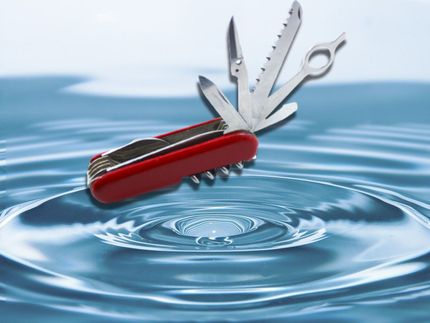Quick clean-up: New process turns decades into hours for mining-water purification
Cleaning up the water left over from mining operations can literally take generations - 25 to 50 years on average - leaving billions of gallons of the precious resource locked up and useless.
Now, a University of Florida researcher has figured out how to trim that time dramatically - to just two to three hours, a potential boon to mining companies, the environment and global regions where water is scarce.
"I think the ability to save water is going to be really big, especially when you're talking about China and other parts of the world," said Mark Orazem a distinguished professor of chemical engineering in UF's Herbert Wertheim College of Engineering.
His team's idea has attracted the attention of the Minnesota-based Mosaic Company, which produces phosphate and potash for fertilizer and operates four phosphate mines in Central Florida.
"We value the longstanding partnership that we have with University of Florida. It's important for us to continually seek research that improves efficiencies of our processes." Said Paul Kucera, senior engineer advisor in research and development with Mosaic.
Mining operations use water for mineral processing, dust suppression and slurry transport. When they're finished with it, the water holds particles of mineral byproducts, known in the phosphate mining business as clay effluent. In the case of phosphate mines that are so common in Florida, the clay effluent has the consistency of milk.
"It looks like a solid, but if you throw a stone into it, it'll splash," he said.
That water is pumped into enormous settling ponds - some are as large as a mile square with a depth of about 40 feet --- where the particles can sink to the bottom. Florida alone is home to more than 150 square miles of such ponds, an area that would cover about half of New York City.
But it's a lengthy process because the particles are electrically charged. Like charges repel and opposite charges attract. The particles' like charge causes them to repel each other, which keeps them suspended in the water instead of sticking together and sinking to the bottom.
That means mining companies can re-use the water only a bit at a time - the part skimmed off the top. Not only is the particle-filled water useless, the land those settling ponds occupy is a valuable asset that could be used for other purposes.
Ideas for speeding up that process go back centuries. In 1807, an early application of the battery invented by Volta in 1800 showed that clay particles moved in response to an electric field. In the 1990s, an electric field was used to separate clay and water in batches, but that concept was deemed uneconomical.
Orazem's design is different because it allows a continuous feed of clay effluent into a separation system. There, upper and lower plates are used as electrodes. An electrical potential difference is applied across the electrodes, creating an electric field, which causes the charged particles to move toward the bottom, where they form a wet solid called a cake. In the cake dewatering zone, the particles can't move, so the water is forced to the top.
The cake can then be used to fill the holes created by the mining operation, while the water is now clear enough to be reused to process mined phosphate ore.
"Instead of having the water tied up in these clay settling areas, water is sent back through the process and then reused and reused and reused," Orazem said.
Orazem's team has created a lab-sized prototype. The next step, he said, is to determine how to scale it up to a point where it can work in a real-world mine.
While Orazem's concept was designed for Florida phosphate mines, he said it could be used anywhere and would be especially useful in arid North Africa. In Morocco and the Western Sahara, with 85 percent of the world's phosphate reserves, water is especially in short supply.
"Recycling water is going to be critically important," Orazem said. "So in Florida, it's an issue. In the desert, it's going to be a major issue."
Most read news
Organizations
Other news from the department manufacturing

Get the chemical industry in your inbox
By submitting this form you agree that LUMITOS AG will send you the newsletter(s) selected above by email. Your data will not be passed on to third parties. Your data will be stored and processed in accordance with our data protection regulations. LUMITOS may contact you by email for the purpose of advertising or market and opinion surveys. You can revoke your consent at any time without giving reasons to LUMITOS AG, Ernst-Augustin-Str. 2, 12489 Berlin, Germany or by e-mail at revoke@lumitos.com with effect for the future. In addition, each email contains a link to unsubscribe from the corresponding newsletter.




























































